50+ Best Slab Serif Fonts
Give your designs a strong foundation with our slab serif fonts. Known for their thick, block-like serifs, these fonts are perfect for headlines, posters, or any design that requires a bold, assertive touch.

Risbak Creative Font
Risbak Creative Font is a slab serif display font, designed to add flair to your creative projects. With its bold strokes and playful characters, it&#...

Clab Modern Slab Serif Font
This font is the perfect example of a slab serif font. It has a chunky letter design with thick serifs. Making it a great choice for designing attract...

Lawless Retro Old West Font
Lawless is a retro-vintage western font that has a classic letter design inspired by old west movies. This font comes in 4 different styles for you to...

Elmville Bold Slab Serif Font
Crafted with precision, the Elmville Bold Slab Serif font stands with a spellbinding blend of character. Its bold architecture features slab serifs ex...

Slabtro Slab Serif Display Font
Introducing Slabtro, a slab serif display font with a healthy dose of retro flair. Known for its robust, bold strokes, and delightful characters embel...

Munky Slab-Serif Retro Font
Munky is a slab-serif font that comes with a retro design inspired by the 60s. The thick bold letters of this font make it a great choice for crafting...

Boxing Vintage Slab Serif Font
Featuring a bold retro design, this slab serif font comes with a set of all-caps letters. It’s most suitable for making titles and headings for ...

Hornbill Modern-Retro Font
This font comes with a set of unique character designs that you usually don’t see in a retro font. It features a combination of modern and retro...
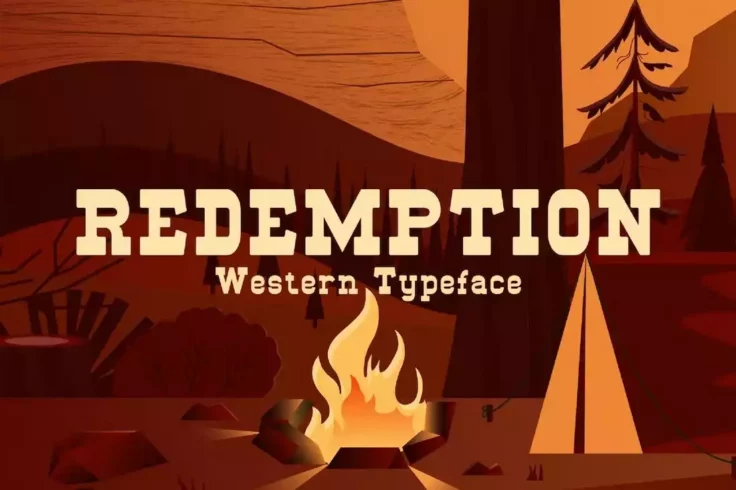
Redemption Wild Western Font
Redemption is a creative slab-serif font with a wild west look and feel. It also has classic cowboy-style letter designs that will make your designs s...

Manline Slabs Classic Slab Font
The Manline Slabs Font, a Modern Serif Font, will revolutionize your design world this festive season. This is no ordinary display font; it brings aut...

Xantheus Font
Xantheus is a bold slab serif font you can use to create titles and headers for posters, website headers, and banners. The font comes in two weights, ...
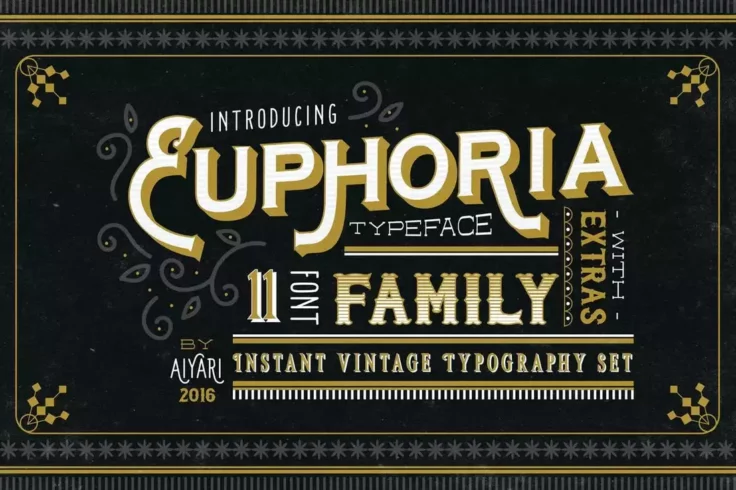
Euphoria Vintage 3D Font Family
Euphoria is a family of 11 different fonts. It includes various styles of fonts such as outline fonts, gradient fonts, Victorian-style fonts, and 3D-l...

Fable Bug Font
Fable Bug comes with a fun and quirky design that makes it perfect for crafting book covers, posters, and greeting cards, especially related to childr...

Korsen Modern Slab Serif Font
Korsen is a unique slab serif font that features a modern design with stylish decorative elements. The font is perfect for crafting logos, labels, and...

Simple Note Minimal Slab Serif Font
Just as the name suggests, this font comes with a simple and clean letter design that will fit in perfectly with any professional design. It’s e...

Troupe Slab Font
This unique font features slab serifs with a fun and quirky design. The font is most suitable for T-shirt designs, greeting cards, and other print and...

Ferguson Slab Serif Font Family
Modeled after the magazine designs of the bygone era, Ferguson is a neat, geometric slab serif font family that is incredibly fitting to a large pool ...

Rebute Slab Serif Font
Rebute features a mixed design featuring elements of both modern and classic styles. The font is available in regular and italic versions and it’...

Grante Slab Serif Display Font
Presenting the Grante Slab Serif Display Font, a unique font designed to add a touch of charm and sophistication to your creative projects, both digit...
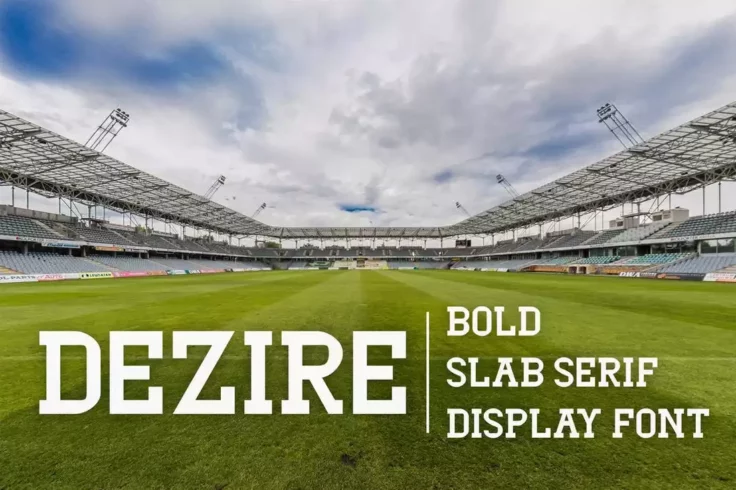
Dezire Modern Slab Serif Font
Dezire is a slab serif font featuring a modern design. This font is perfect for sports all kinds of sports-related designs as well as for making big b...

Murmers Slab Serif Font
Murmers slab serif font comes with a horror and suspense-filled design that makes it look more like a title from a vintage movie. In addition to the f...

Neue Stanley Slab Serif Font
Introducing Neue Stanley, a vintage serif font with a bold and striking appearance. This font takes its inspiration from the classic letters seen in o...

Luxe Slab Font
Yet another slab serif font with a high-end design. This font can be used with your designs related to luxury brands as well as with logotype, busines...
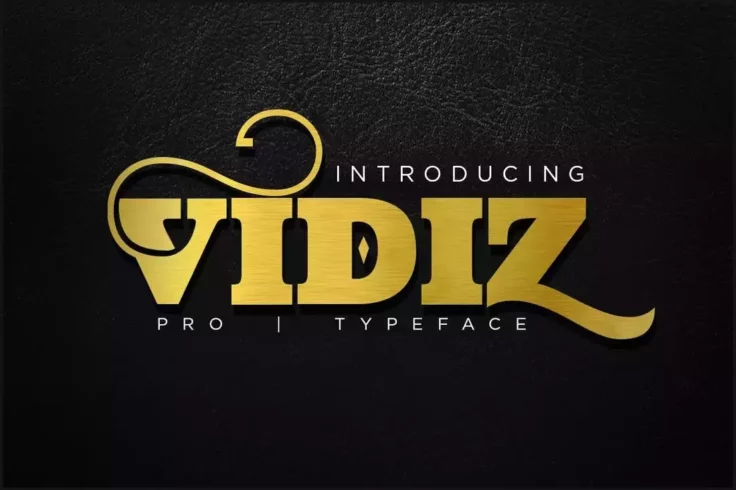
VIDIZ PRO Typeface
Vidiz Pro is an elegant slab serif font that also features a luxurious design. This makes it the perfect choice for designing a logo, poster, website ...

Galvin Slab Serif Font Family Pack
Galvin is a complete slab serif font family that comes with 8 different weights ranging from regular, outline, thin, and bold. The condensed design of...

Mensch Slab Serif Font Family
With more than 30 different fonts to choose from, Mensch is a big family of fonts you can use with various design projects. It includes both serif and...

Ace Serif Slab Serif Font
Ace Serif is a modern slab serif font that features a professional design, making it a great choice for designing modern website headers, posters, tit...
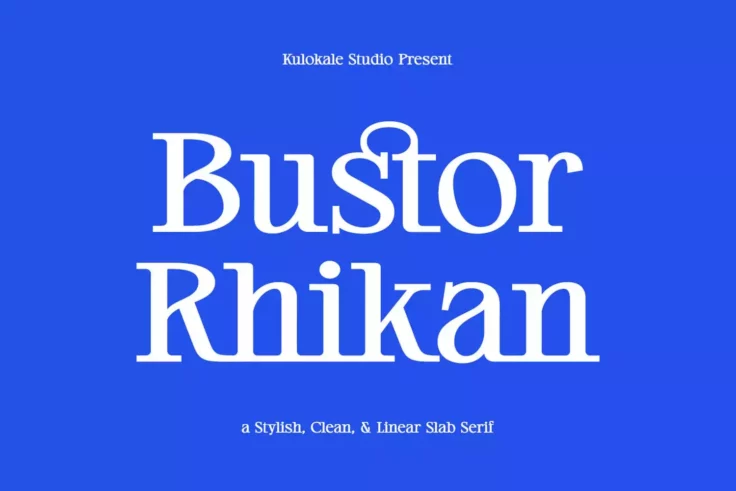
Bustor Rhikan Slab Serif Font
Check out Bustor Rhikan, a linear slab serif font that stands out from the rest. Created keeping in mind the latest design needs, Bustor Rhikan is a f...
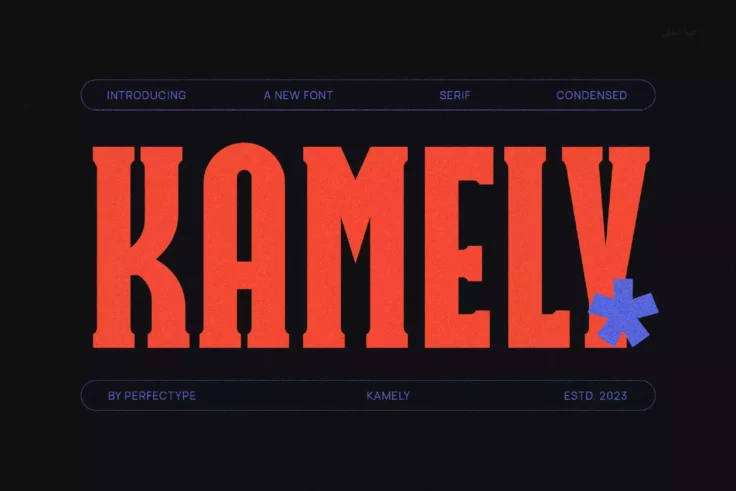
Kamely Futuristic Slab Serif
The Kamely Futuristic Slab Serif typeface possesses a distinct symmetrical rhythm due to a wide-ranging mix of inspirations. This results in a unique ...

Controwell Victorian Slab Serif Font
Controwell is an elegant slab serif font that features a design inspired by the Victorian era. According to the creator, the font comes with two layer...

Manson Vintage Slab Serif Font
Manson Vintage Slab Serif Font is a showcase of traditional typography with a remarkable modern twist. Its inspiration came from the sturdy and imposi...

Kula Modern Slab Serif Font
Kula is an elegant and modern slab serif font that features a thick and bold design. This font is ideal for making headings, poster titles, and even l...

Burtuqol Vintage Slab Serif Font
Bring a vintage charm to your designs with Burtuqol, a gorgeous slab serif font perfect for a range of branding and packaging projects. It comes packe...

Kalela Condensed Slab Serif Font
A unique family of slab serif fonts featuring a creative condensed letter design. This font has the perfect look for crafting big titles for banners, ...

Karens Bold Slab Serif Foont
Karens Bold Slab Serif Font is an intricately-designed font bundle that brings out an uncommon blend of modern and elegance in every stroke, perfect f...
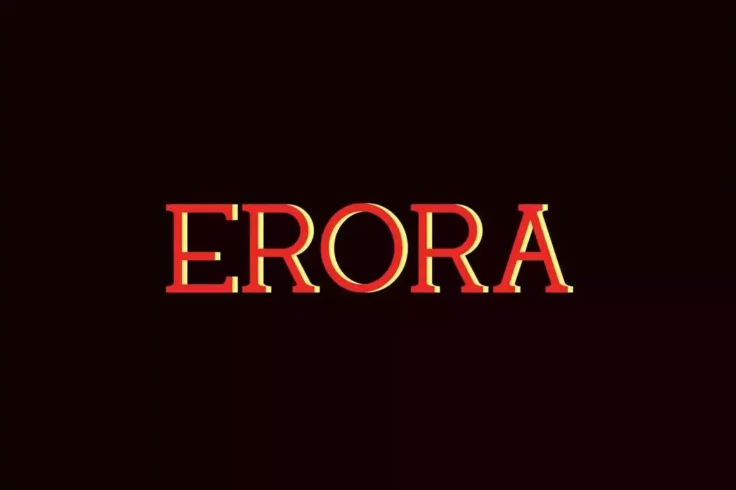
Erora Slab Font
Erora is a slab serif font that supports both print and web design works. The font is suitable for website headers, social media covers, logo design, ...

Blade Slab Serif Font
Blade is a horror-themed slab serif font that comes with a unique design that’s most suitable for horror-themed movie posters, book covers, gree...

Jeffjak Retro Slab Serif Font
Is it modern or retro? Well, this font combines both design elements to offer a stylish look for your typography designs. It includes both uppercase a...

Disway Slab Serif Stencil Font
Introducing Disway Slab Serif Stencil Font, a bold and dynamic modern font. Designed to make an assertive statement, this font conjures an air of auth...

Brewski Font
Brewski is a hand-drawn vintage-themed slab serif font that’s made for crafting designs for brewery business, But, you can use it to design othe...

Ropstone Font
Ropstone is a vintage slab serif font that comes in two styles featuring vintage borders and ornaments. This font is ideal for crafting badges, logos,...

Muleno Elegant Font
The Muleno Elegant Font is a sophisticated and stylish complement to any digital or printed project. With a versatility matched by no other, this font...

Woodman Font
Woodman is a simple sab serif font featuring 3 weights: regular, thin, and heavy. Each weight has 4 different styles, and the heavy version has 5 styl...

Calvin Slab Serif Font Family
Calvin is a stylish slab serif font that comes with a modern design. This font is perfect for all kinds of creative and professional designs from logo...

Servat Modern Decorative Slab Serif Font
If you’re looking for a font with giant letters to craft big titles that can be seen from far away, this is the font for you. It features a set ...
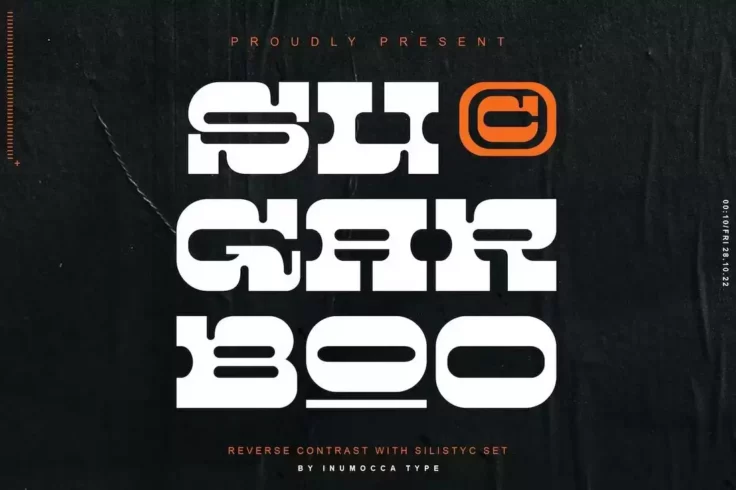
SugarBoo Reverse Contrast Slab Serif Font
SugarBook is a unique reverse contrast font that will help make your typography designs stand out from the crowd. This font comes with lots of additio...

Enyo Slab Font
Enyo is a handwritten slab font that will add an informal and personal touch to your designs. The font is particularly well-suited for designing kid�...

Mutone Classic Slab Serif Font
Mutone is a classic vintage slab serif font perfectly fitting for a range of design projects from logos, posters, signs, to cover titles, and headline...

Yahya Slab Serif Font Family
An elegant slab serif font family featuring 5 different font weights. You can use this font to design logos, labels, business cards, and more for life...

Decurion Family
Decurion is a highly legible font featuring clean, geometric shapes and sharp edges, giving it a modern and sleek appearance. It is heavily influenced...

Freshman College Ocatagonal Slab Serif Font
The college sports style design of this font makes it a great choice for designing logos, titles, and headings for football and baseball-themed design...
FAQs About Slab Serif Fonts
What are Slab Serif Fonts?
Slab Serif Fonts, also known as Mechanistic, Square Serif, or Egyptian, are a type of serif font characterized by thick, block-like serifs. Serifs are the small lines or strokes that extend from the ends of the main strokes of a letter in a font. In contrast to more typical, delicate serif fonts, the serifs in Slab Serif fonts are typically as heavy as the line width of the letters themselves.
The design originated during the Industrial Revolution in the 19th century, and is known for its use in headlines and display text rather than body content. This is due to their bold impact, making them suitable for grabbing the reader's attention.
What are the common uses of Slab Serif Fonts?
Given their bold and impactful design, Slab Serif fonts are mainly used in headlines, display texts, logos, and titles. They are typically not used in body text or for small point sizes, as the heaviness of the font can make text difficult to read. However, in larger sizes, it can be utilized to create strong emphasis and stand out in designs.
Slab Serif fonts are also favored for their versatility and can be seen in various styles ranging from retro, modern or even rustic depending on the particular font used.
What is the difference between Slab Serif and other Serif Fonts?
The main difference between Slab Serif and other Serif fonts lies in the construction of the serifs. Traditional Serif fonts, like Times New Roman and Georgia, have delicate, thinner serifs that extend off the main strokes of a character. On the other hand, Slab Serif fonts feature thick, heavy serifs that are block-like in appearance and often carry the same weight as the line thickness of the characters.
Further, Slab Serif fonts are more distinctive and attention-grabbing than their Serif counterparts. They are typically used for headers or titles rather than body content where a more readable font like a traditional Serif would be used.
Who designed the first Slab Serif Font?
The first Slab Serif font, often referred to as the "Egyptian" style, was designed by Vincent Figgins in 1815. Figgins was a British type founder, who created the font as a response to the increasing need for advertising, poster fonts during the Industrial Revolution. These fonts needed to be bold and visible for use in signage and posters.
The term "Egyptian" was used to describe these fonts due to the prevailing Western fascination with Ancient Egypt during that period, although the font style itself doesn't have a true connection with Egyptian writing systems.
Are Slab Serif Fonts considered modern or vintage?
While the origin of Slab Serif Fonts dates back to the 19th century, these fonts can be seen as both vintage and modern. With their appearance in the industrial revolution and frequent use in the 19th century, they carry a vintage feel. However, their bold, striking characteristics give them a contemporary edge as well, making them a versatile choice for both modern and retro design projects.
Moreover, there are quite a number of newer Slab Serif typefaces which are designed with a modern twist, keeping them relevant and appealing for current graphic design standards and trends.
